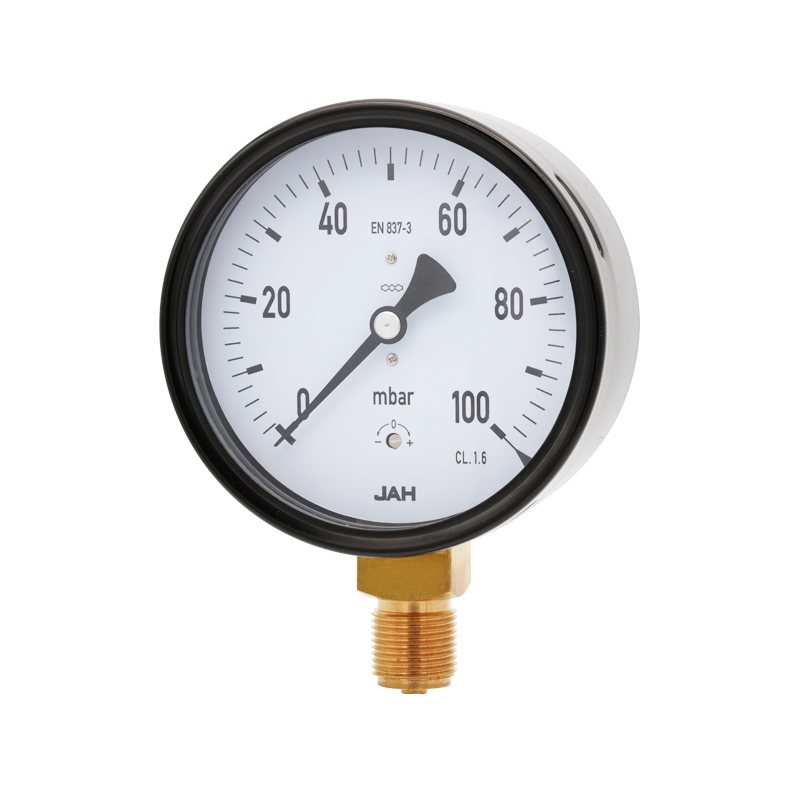
Okt . 18, 2024 08:55 Back to list
static pressure differential pressure gauge
Understanding Static Pressure and Differential Pressure Gauges
In various engineering and industrial applications, pressure measurement is critical to ensure system efficiency, safety, and reliability. Among the various tools available for measuring pressure, static pressure gauges and differential pressure gauges play a prominent role. While they may seem similar at a glance, understanding their functions and applications can significantly enhance their effectiveness in monitoring system performance.
What is Static Pressure?
Static pressure refers to the pressure exerted by a fluid at rest. In various systems, including HVAC (Heating, Ventilation, and Air Conditioning) systems, static pressure is essential for determining airflow and ensuring effective system operation. For example, in an HVAC system, maintaining the proper static pressure helps ensure that air is distributed evenly throughout the ducts, preventing hotspots or cold areas within a building.
Static pressure is typically measured in units such as pascals (Pa), millimeters of mercury (mmHg), or pounds per square inch (psi)
. Static pressure gauges are designed specifically to measure this type of pressure, providing readings that help engineers and technicians assess the performance of their systems.Understanding Differential Pressure
Differential pressure, on the other hand, is the difference in pressure between two points in a system. This is particularly important in applications where flow rates and fluid dynamics play a crucial role. For instance, in filtration systems, the differential pressure across a filter can indicate when the filter needs to be cleaned or replaced. A pressure drop signifies that the filter is becoming clogged and may be impairing airflow or fluid flow.
Differential pressure gauges often consist of two ports, one measuring the pressure at a point upstream and the other measuring it downstream. By calculating the difference between these two measurements, operators can gain insights into flow rates, system efficiency, and potential issues within the system.
static pressure differential pressure gauge

Applications of Static and Differential Pressure Gauges
Both types of gauges have distinct applications across various industries. In the HVAC industry, static pressure gauges are used to verify that air distribution meets design specifications. By measuring static pressure at various points within the duct system, technicians can diagnose issues such as duct leaks, improper fan performance, or inadequate return airflow.
Differential pressure gauges find applications in a wider array of systems. In cleanrooms or controlled environments, these gauges help ensure that the pressure differential between the inside of the room and the outside is maintained at desirable levels to prevent contamination. Similarly, in water treatment plants, differential pressure measurements are vital for monitoring the performance of filters, pumps, and other equipment.
Choosing the Right Gauge
When selecting the appropriate gauge for a specific application, several factors must be considered. The environment in which the gauge will be used, the expected pressure ranges, and the specific measurements required are all important. Static pressure gauges are generally simpler and often less expensive than differential pressure gauges, but they do not provide insights into flow or system performance in the same way that differential gauges do.
Conclusion
In summary, static pressure and differential pressure gauges are fundamental instruments in the realm of pressure measurement. Each serves unique purposes and is essential for maintaining system efficiency, safety, and reliability across various applications. By understanding the differences between these two types of gauges and their appropriate applications, engineers and technicians can ensure optimal system performance, prolong equipment life, and make informed decisions about maintenance and upgrades. As technology continues to evolve, the development of more advanced and precise pressure measurement tools will likely lead to greater efficiencies and innovations in numerous industries.
-
High-Precision 5 Valve Manifold Differential Pressure Gauge Suppliers
NewsApr.29,2025
-
High-Precision Diaphragm Vacuum Pressure Gauges Manufacturers & Quotes
NewsApr.29,2025
-
Omega Differential Pressure Gauges High Accuracy & Durability
NewsApr.28,2025
-
Low Pressure Differential Pressure Gauges Precision Solutions & Quotes
NewsApr.28,2025
-
Digital Diaphragm Pressure Gaauge Precision Measurement & OEM Quotes
NewsApr.28,2025
-
Differential Pressure Gauge China Price High-Accuracy & Best Quotes
NewsApr.28,2025
